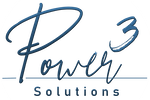2025 will be a remarkable year regarding changes within the federal government and what it means for the workforce. When the Trump administration took office, several executive orders were established. One was the dismissal of the federal Diversity, Equity, and Inclusion (DEI) office. The DEI is an initiative created to promote fair treatment within the workforce, particularly for groups who have historically been underrepresented or subject to discrimination based on identity or disability. DEI efforts were first recognized in 1865 to establish preferential hiring for veterans and their widows. In 1936, President Roosevelt incentivized purchasing products made by the blind. President Kennedy expanded on DEI in 1961 by creating affirmative action requirements, which included a provision that government contractors “take affirmative action to ensure that applicants are employed, and employees are treated [fairly] during employment, without regard to their race, creed, color, or national origin.”
In January 2025, President Donald Trump issued an executive order titled “Ending Illegal Discrimination and Restoring Merit-Based Opportunity,” aiming to dismantle DEI programs within federal agencies and beyond into privately owned businesses. As a result, private organizations face decisions about maintaining, adjusting, or eliminating DEI programs. While rolling back DEI policies has some concerns, there is often confusion about how Equal Employment Opportunity (EEO) laws will continue to play a mandatory role within the workforce.
EEO was established in 1965 as a result of Title VII of the U.S. Constitution that creates protections for historically underrepresented classes, and is still in effect in spite of current executive orders. This means that private organizations still have obligations under the law to protect employees from discrimination and harassment in the workplace, required posters to be displayed, as well as reporting obligations once they reach a certain size for protected classes. Employers who fail to comply with EEO are subject to enforcement by the Equal employment Opportunity Commission (EEOC).
While the DEI and EEO are often used interchangeably, they serve distinct purposes in creating fair and inclusive workplaces. EEO is a constitutionally mandated legal obligation, while DEI is voluntary and strategic in that it seeks to take proactive measures to ensure inclusive hiring practices and work cultures. DEI enhances workplace diversity but does not change federal reporting requirements under EEOC. Even with DEI being dismantled within the federal government, companies must still comply with EEO laws, including reporting requirements, unless and until otherwise instructed.
Let’s revisit EEO compliance requirements, a federal law that ensures all individuals have equal access to employment opportunities and are free from discrimination based on race, color, religion, sex, national origin, age, disability, or genetic information. Employers are required to follow specific regulations, including:
- EEO-1 Reporting: Private employers with 100+ employees and federal contractors with 50+ employees and contracts of $50k or more, must submit an annual EEO-1 report detailing workforce demographics by race, gender, and job category. This requires data collection for these factors in both applicant tracking systems and employment systems for employees.
- EEO Poster Display: The EEOC has a downloadable poster or PDF that should be displayed in your physical office locations and/or in your electronic files made available to employees.
- Compliance with Anti-Discrimination Laws: Laws like Title VII of the Civil Rights Act, the Americans with Disabilities Act (ADA), and the Age Discrimination in Employment Act (ADEA) mandate fair treatment in all employment practices, and protections for retaliation when reporting such acts.
The DEI focused on reaching underrepresented communities, addressing systemic barriers, promoting fair pay, and fostering an environment where everyone feels valued. These are still vital attributes for leaders to uphold in their workforce. Companies with strong DEI practices often exceed EEO requirements by proactively addressing inequities before they become legal issues. We’ll talk about that more below.
DEI is no longer treated as a separate function. Therefore, organizations can avoid legal pitfalls while promoting a workplace without discrimination by distinguishing between compliance and voluntary DEI efforts. For businesses looking to align EEO compliance with DEI efforts, the key is balance:
- Follow federal and state EEO reporting laws to ensure compliance.
- Use DEI initiatives to build an inclusive culture without enforcing quotas or discriminatory policies.
- Train leadership to understand both legal requirements and ethical best practices.
- Keep EEO reporting separate from internal DEI metrics to maintain these independent initiatives.
What happens if companies don’t comply with EEO reporting requirements? Failure to file the EEO Report for federal contractors can lead to the termination of federal contracts and disqualification from future government contracts. Companies may face fines, settlements, or damages related to employment discrimination claims when non-compliance is tied to broader discriminatory practices. Public and investor perceptions could also be a factor.
The best way to avoid penalties is to set internal deadlines ahead of EEO submission dates. Conduct regular HR audits to ensure accurate data collection. Working with trained HR teams on EEO regulations and reporting requirements is imperative. Having an in-depth, fully functional employee handbook that provides coverage to the employer and employee will also set guidelines on fair treatment and establish a comfortable work culture. If you feel your management team or employees could use additional guidance, online training resources are available.
We’ve got you covered. Power3 offers a training bundle for employee compliance courses. Companies can purchase all four compliance courses as a bundle, including Sexual Harassment and Workplace Harassment Training, Non-discrimination and Equal Employment Opportunity Training, Business Ethics Training, and Workplace Safety Training. All trainings are self-paced, offer valuable insights, quizzes to ensure the subject matter was understood, and a certificate of completion. Courses can also be purchased individually.

Employee training helps organizations comply with federal, state, and local anti-discrimination laws (like Title VII of the Civil Rights Act, ADA, and ADEA). It reduces the risk of costly lawsuits, penalties, and reputational damage. When companies educate employees and managers on what constitutes discrimination, harassment, and retaliation, it helps to prevent inappropriate behaviors and fosters a respectful work environment. Don’t forget to include your management team. Training helps managers become more aware of unconscious biases and how they can impact decisions related to hiring and promotions.
Most importantly, it sends a message that you care about your employees’ well-being. Beyond legal reasons, EEO training reinforces a company’s commitment to ethical practices and social responsibility. Ultimately, fair practices around employment and work culture can work together to create a more equitable and legally sound workplace. The changes to the federal DEI office do not replace the importance of EEO reporting or upholding anti-discrimination laws.
Power3 delivers a solid understanding of the requirements and a team to support your company with hiring, retention, reporting, and policies, and if you’d like support with these efforts please email us at Business@power3.com.


